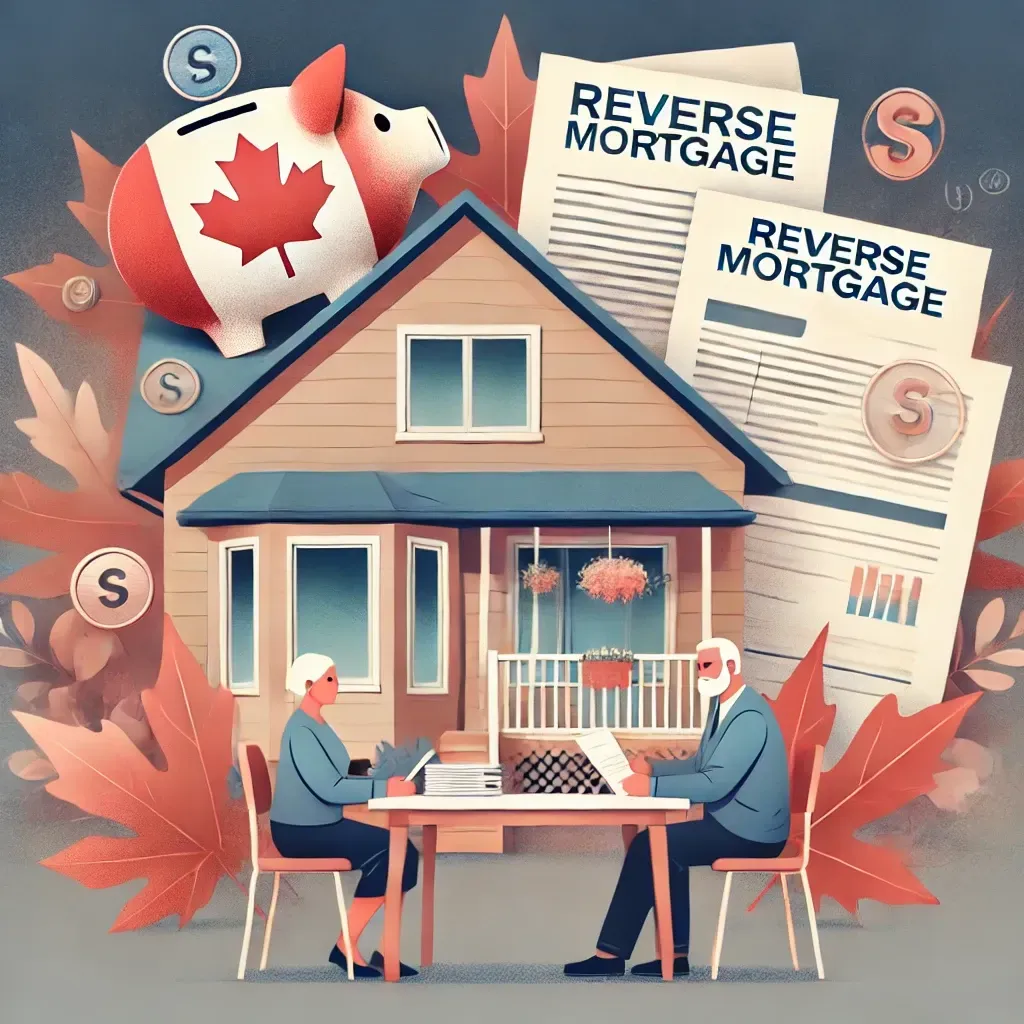
Understanding Reverse Mortgages in Canada: How They Work and What to Consider
Understanding Reverse Mortgages in Canada: How They Work and What to Consider

As Canadians age, many find themselves looking for ways to secure additional income during retirement while maintaining the comfort of staying in their own homes. A reverse mortgage is a financial option designed to help homeowners aged 55 and older access the equity in their properties without the need to sell or move out. In this blog, we’ll explore how reverse mortgages work in Canada, the benefits they offer, and some important factors to consider before taking one out.
What is a Reverse Mortgage?
A reverse mortgage is a type of loan that lets homeowners tap into the equity they’ve built in their home, without having to sell or relocate. Unlike a traditional mortgage where the homeowner makes regular payments to the lender, a reverse mortgage works in reverse. The lender provides funds to the homeowner, which are paid back only when the homeowner sells the home, moves out, or passes away.
The amount you can borrow depends on several factors, including the homeowner’s age, the appraised value of the property, and the location of the home. The older the homeowner, the more equity they can generally access.
Key Benefits of a Reverse Mortgage
1. Access to Home Equity Without Selling
For many retirees, the home is their largest asset. A reverse mortgage allows them to access the value tied up in their property without having to sell or downsize. This can be especially helpful if a significant portion of their wealth is tied to the home, rather than liquid assets like savings or investments.
2. Supplement Your Retirement Income
One of the most common reasons Canadians opt for a reverse mortgage is to increase their retirement income. The funds from a reverse mortgage can provide a regular stream of cash that can be used to cover daily living expenses, medical bills, home repairs, or even travel. This added financial flexibility can make a big difference in maintaining your standard of living during retirement.
3. No Monthly Payments
Unlike traditional home loans, there are no monthly mortgage payments with a reverse mortgage. This can be a huge relief for retirees who may be living on a fixed income. The loan balance, along with interest, is typically paid off when the homeowner sells the home, moves into a care facility, or passes away. This structure allows retirees to enjoy their golden years without the financial burden of monthly mortgage payments.
4. Flexible Loan Options
Reverse mortgages offer flexibility in how you receive the funds. You can choose to take a lump sum, set up a line of credit, or opt for a combination of both. This flexibility means you can tailor the loan to suit your specific financial needs, whether that’s managing day-to-day expenses or covering larger, one-off costs.
Important Considerations Before Getting a Reverse Mortgage

While reverse mortgages can be a valuable financial tool, they aren’t right for everyone. Here are some important considerations to keep in mind:
1. Eligibility Requirements
To qualify for a reverse mortgage in Canada, homeowners must be at least 55 years old. The amount you can borrow will typically increase as you get older, since lenders assume the loan will be paid off sooner. Other factors, such as the value of the home and its location, also play a role in determining eligibility and the loan amount.
2. Home Equity Requirements
Reverse mortgage providers require homeowners to have sufficient equity in their home to qualify for a loan. The more equity you have, the more money you may be able to borrow. However, each lender has different requirements, so it’s important to check the specific criteria with potential lenders.
3. Interest Rates and Fees
Reverse mortgages typically come with higher interest rates compared to traditional home loans. Additionally, there are often fees associated with setting up and maintaining the loan. These rates and fees can accumulate over time, potentially reducing the value of the equity remaining in your home. It’s essential to fully understand the costs involved and shop around to compare offers from different lenders.
4. Impact on Your Estate and Inheritance
One of the major considerations with a reverse mortgage is how it will affect your heirs. Because the loan is repaid when you sell the home, the amount owed, including interest and fees, will be deducted from the proceeds of the sale. This means there will likely be less left for your estate or loved ones. If passing on your home’s value to your heirs is important to you, it’s essential to factor this into your decision.
Conclusion
A reverse mortgage can be an excellent financial tool for Canadian homeowners over the age of 55 who wish to tap into their home equity without the need to sell or leave their homes. It can provide an additional stream of income in retirement, help manage unexpected expenses, and offer flexibility in how you receive the funds.
However, it is essential to carefully evaluate the benefits in relation to the potential drawbacks, such as higher interest rates and the impact on your estate. To make an informed decision, it is advisable to consult with a knowledgeable iMortgage Capital agent and compare offers from multiple lenders to ensure that a reverse mortgage aligns with your financial goals and circumstances.
